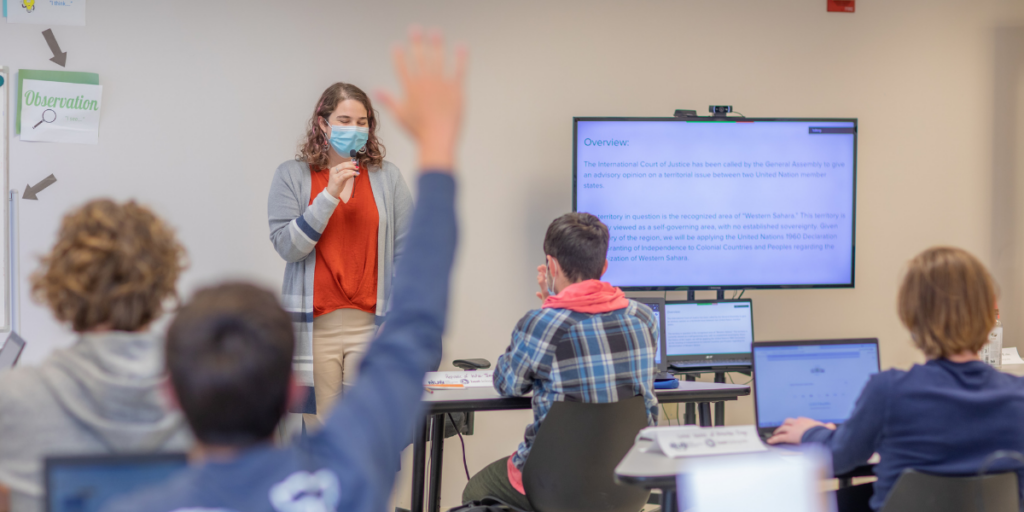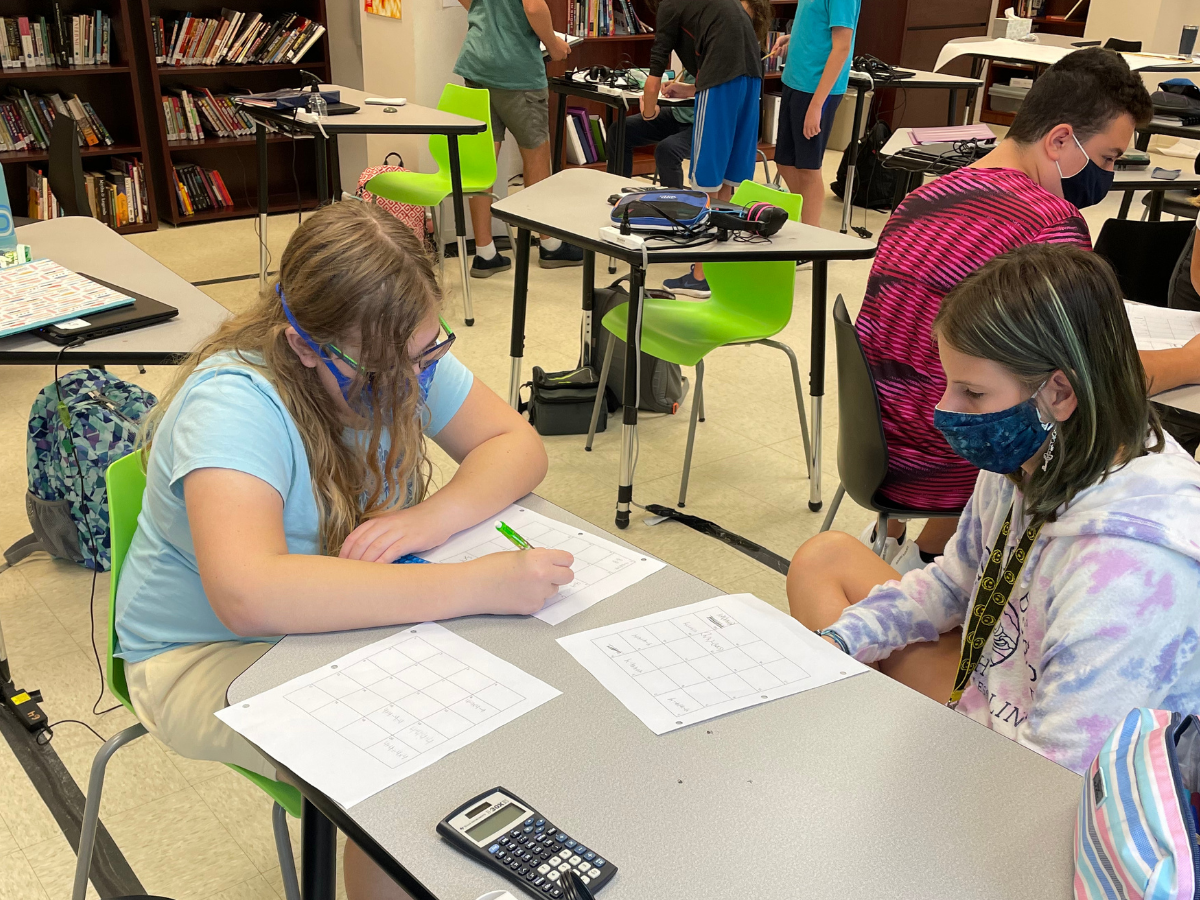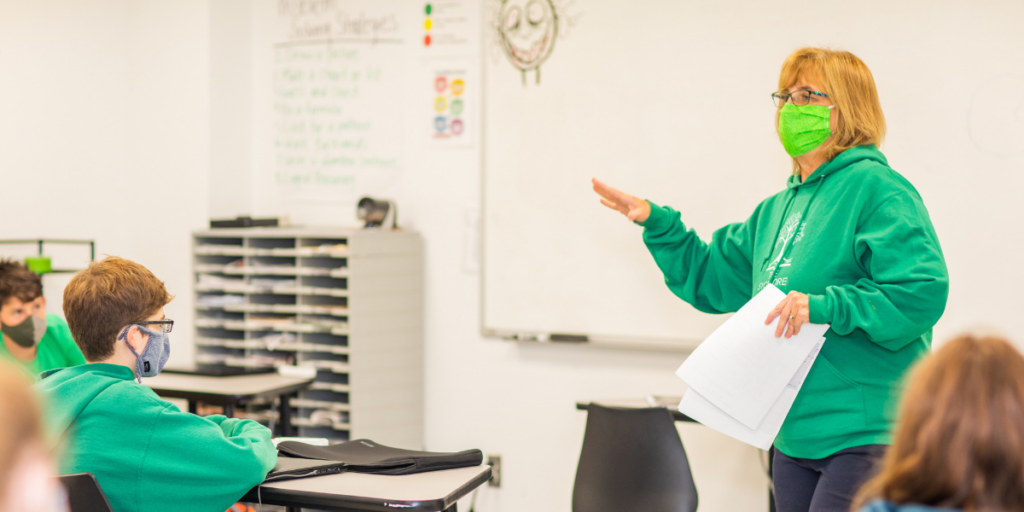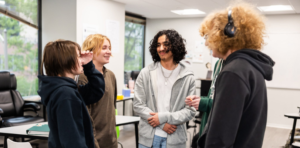Return to In-Person Learning: How You Can Help Your Child

This fall, parents around the country took a deep breath and cautiously, worriedly, and maybe even gleefully sent their children back to school for a return to in-person learning.
As our students return to school, parents may still be filled with anxiety asking themselves questions, such as:
- Will my child be safe at school?
- Will my child like being back at school?
- Do they remember how to be a student?
- Will they remember how to interact with others?
- Will their anxiety lesson once they get used to in-person learning again?
- Will my anxiety ever decrease?
So, what can we do? How can we support our children and reassure ourselves?
Tips to Help Manage the Return to In-Person Learning
Most of us are trying to navigate our own anxiety as we try to smile bravely and encourage our children to return to school and trust that it will all go well.
Below are some tips parents can use to navigate the return to in-person learning and to help ensure your child thrives in this academic year and beyond.
Modeling
Even if you don’t always feel it, try to model the attitude and belief you want your child to embrace as they return to in-person learning. If you are anxious about it, your child is very likely to pick up on that. If you’ve been openly criticizing the school system and questioning their ability to keep your child safe, your child may hold onto those same worries. Be mindful that your child watches you, listens to you (yes, they actually do listen), and bases many of their beliefs on what you’re modeling for them.
Flexibility
The word of the year — again. While the pandemic continues, it is imperative that we as parents model flexible thinking, are open to a changing landscape, and are willing to adjust our expectations. Your child may be exposed to COVID-19 and need to be quarantined; your school may switch to virtual learning or cancel your child’s soccer season. It’s not ideal, but it’s the world we’re living in now. The more we can model openness and adaptability, the better off we will be, and the more we’re teaching our children valuable life lessons.
Set Routines to Help Your Child Navigate the Return to In-Person Learning
In the summer, we often relax our rules. Kids may get to stay up late, stay over at friends’ homes during the week, watch movies in bed, and have their phones on them 24/7, etc. School year rules are very different from summer rules, and it’s essential to communicate to your student the new school day hours and routine. Establishing a nighttime routine that includes a set time for bed, turning off electronics an hour before bedtime, and having your child engage in a quiet activity such as reading, listening to music, or taking a shower, is the first step and is incredibly helpful. The first couple of weeks of school can be rough. Still, if you’re able to establish a regular bedtime routine, it will dramatically improve your child’s sleep, improving their mood, mental health, and productivity at school. A solid set of daily routines in September will lay the groundwork for a strong school year.
Routines are also great to have throughout the week. Does your child have a set time to do their homework, exercise, or have some downtime? Every child is different. Some children crave activity and love to come home, grab a snack, head to the playground or pool, and run around until dinner. Other children need some downtime to decompress. Having more than one activity scheduled during a week may overwhelm one child but underwhelm another child. It’s important to match the activity level with the child. You may have one child who wants to be in the school play, try out for the field hockey team, and run for student government while you have to coax your second child just to go to soccer practice twice a week. Pay attention to both what they say and how they act. Anxiety can often be a sign of being overwhelmed.
Some children also need more structure than others. You may have one child who gets themself up in the morning, gets dressed, makes breakfast, makes lunch, and gets to the bus stop on time every morning. However, your other child may require a lot more guidance, routine, and structure. They might need a visual schedule and time to practice that routine for weeks before getting into the groove. Are there tasks they can do the night before to streamline their morning, such as making their lunch, setting out their clothes, and taking a shower? Adjusting expectations and supports, depending on the child and their unique needs, is critical. Remember, we want to set them up for success, but doing things for them does not help them learn a skill or be independent. (See: I do, we do, you do)
Transitioning back to school is just that, a transition, and we need time to adjust to that change. Give you and your child some time to acclimate and work on it together. Bumps are normal and expected.

Being Present
As our children grow from children to tweens and teens, we sometimes feel like we have to become detectives. When our children are in elementary school, they often love to recount tales of their school day. However, when they get to middle school, they often become more reticent to share their experiences and appear more sullen, secretive, and uncommunicative. In high school, your children may circle back and share more, but the discussions take on a different quality. Our teens and tweens want to talk WITH you, have more adult conversations, and may enjoy debating.
It’s crucial as parents that we try to be present when we’re with our kids. Try to unplug from your phone or at least pause and listen when your child wants to talk — it’s usually when you are doing something like working on your laptop, making dinner, or driving them to an activity. I think the fact that we’re engaged in something makes it feel safer or easier for them to talk with us. I’ve had many discussions with my kids while we’re watching television together or taking a walk.
It is unlikely we can anticipate when or why our child will struggle (and they WILL struggle with something; it’s not a question of if but when). However, we can try to be present to notice and support our children when they are struggling. Our children’s struggle is not a sign that we’re bad parents; it’s a sign that our child is human. Could your parents have prevented you from feeling pain, sadness, or anger? Can anyone? Our job is not to prevent our children from feeling negative emotions but teaching them how to navigate and cope with negative emotions. If you want to learn more about being present and cultivating empathy in your child, you can read more on our blog post, “Cultivating Empathy.”
Navigating Technology
As parents, you have to figure out your stance on technology and how much technology is too much for your child. Some parents only allow technology on weekends. Other parents limit screen time to an hour. Some parents say schoolwork first, then technology, and set a time limit. Dr. Clifford Sussman, an expert on excessive screen-time problems, recommends that for every hour a child spends on a screen, they should have one low-tech hour. For example, one hour of Mario Kart and then one hour of pickup basketball outside.
I recommend having a charging station somewhere in your house where EVERYONE unplugs at night — you put your phones in the charging station and don’t look at them until the morning. If you get up and your child’s phone is not there, they don’t have access to it that school day. That is a natural consequence.
I also recommend NOT having your child keep technology in their bedrooms at night: no computers, cell phones, iPads, TVs, or projectors. There is no way you can monitor the technology in your child’s room unless you turn off the electricity and WiFi every night. Bedrooms are for sleeping. Try to get any distractions out of the bedroom. Bored kids usually fall asleep.
Normalize Masks and Encourage Following COVID Protocols
Again, your kids watch you and look for your take on issues like following COVID-19 protocols. All area schools are mandating wearing masks indoors. Are you supportive of that? Are you saying it’s a pain? Wearing a mask doesn’t have to be a big deal. Kids are very adaptive and seem to wear them with few problems. It’s more often the adults who are questioning and complaining. Wearing a mask seems like a small price to pay for being able to attend school in person. Think of the social interactions and the quality of in-person instruction — that appears to be more than worth it.

Helping Your Child Cope with Anxiety for Return to In-Person Learning
It’s normal and expected for most children, tweens, and teens to be nervous about returning to school. Encourage them to talk about it and see if you can address their concerns. Try to reassure them without minimizing their feelings. If possible, see if you can give them some sense of control. If you’re able to provide them with choices, that’s ideal. You could role-play scenarios they are fearful about.
In some cases (increasingly so since COVID), anxiety gets to a level where you need some professional help. I encourage parents to be proactive. Many therapists are inundated with clients so they may have a waitlist. Look for support early, but be prepared to wait. You can also seek out resources at your child’s school.
School Avoidance & Refusal
Avoiding school or refusing to attend can be a real problem for students with high anxiety. If there was one benefit to virtual learning last year, it’s that students with anxiety were able to attend school regularly without the stress of going physically into a school building. But as schools return to in-person learning this year, many kids may struggle to adjust to the change. School avoidance can start with students manifesting somatic symptoms and saying they can’t go to school because of a stomach ache or headache. All very reasonable ailments, and in a COVID world, you immediately keep your child home from school. But if these begin to add up and it seems your child is avoiding or refusing to go to school, address this right away. Try to figure out the issues and enlist support from your school counselor or an outside therapist if you have one. Make staying home boring (no screens, games, etc.) and create a plan with the school counselor to get your child back to school and to stay in school. The more they stay home, the harder it is to get them to return to school. Anxious students must learn that they can persevere even when they don’t feel their best. Facing fears is how students overcome anxiety. Avoiding what they are anxious about only makes the anxiety worse.
A Few Final Tips:
- Don’t take yourself too seriously — we mess up as parents, and that’s okay. Sharing with your kids that you made a mistake can be a powerful moment.
- Humor is healing — we need to laugh more; it can be a balm and a way to connect.
- Be honest with yourself and them. Again, admitting mistakes is powerful, but it’s also okay to say that you don’t know the answer to something — you can figure it out together.
- Nagging doesn’t work, I can’t emphasize this enough, and yet we all do it. Sometimes we’re even annoyed at ourselves WHILE we’re doing it. Nagging is ineffective and sends the message that we don’t trust that our child (or partner) can do something independently. It undermines confidence and a sense of competence. If your child forgets to turn in their homework, you nagging them about it doesn’t help. It just shifts their attention away from themselves and onto you. For example, let’s say you keep nagging your child to remember their water bottle; they become resentful at your nagging. Did they learn to remember their water bottle? No. But they did learn to get annoyed and maybe even blame their incompetence on you. Instead, what if your kid forgets his water bottle and then is thirsty at school; perhaps the next day, they will remember that and remember to bring in their water bottle. Natural consequences can be powerful. It might not happen right away, but if our children make the same mistakes enough times, they eventually correct them on their own.

